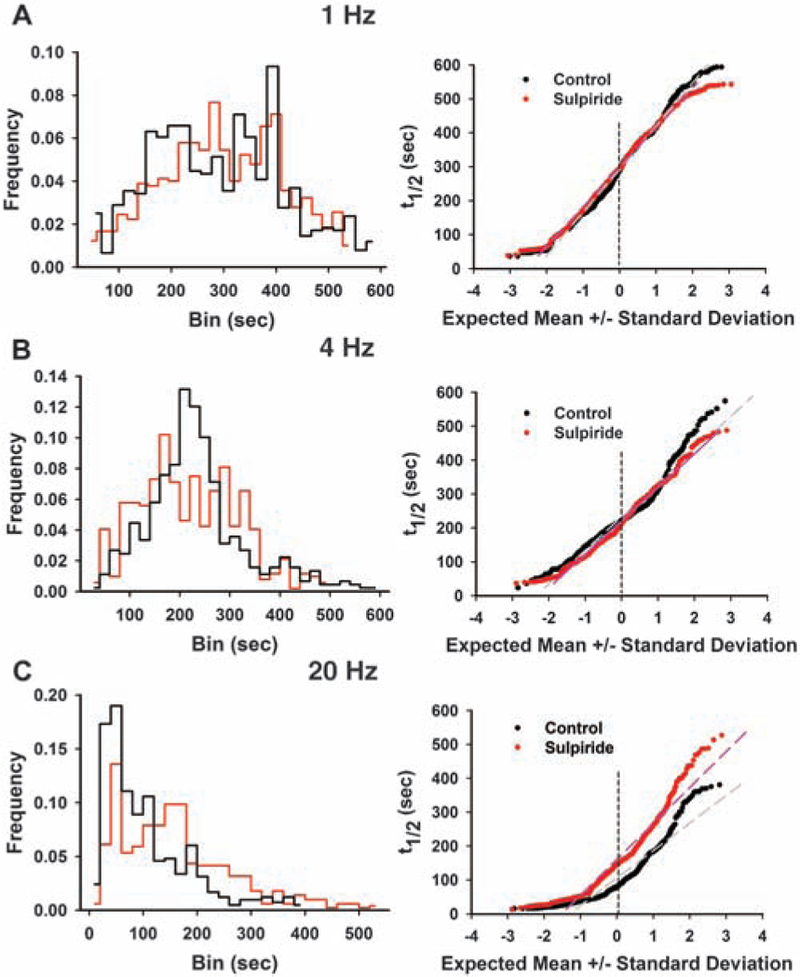Fig. 4.

Effect of dopamine D2R antagonist sulpiride on presynaptic terminal populations is frequency-dependent. (A) Effect of sulpiride on dopamine terminals stimulated at 1 Hz (765 puncta from 9 slices for the control and 901 puncta from 8 slices for sulpiride). Normal probability plot reveals that sulpiride accelerated transmitter release from the slowest terminals. (B) Effect of sulpiride on dopamine terminals stimulated at 4 Hz (519 puncta from 10 slices for the control, and 520 puncta from 5 slices for sulpiride). The effect of sulpiride was similar to that at 1 Hz stimulation. (C) Effect of sulpiride on dopamine terminals stimulated at 20 Hz (416 puncta from 6 slices for the control and 508 puncta from 4 slices for sulpiride). Sulpiride inhibited release from >65% of the terminals, except for the most active population. At each stimulation frequency, sulpiride shifted the entire population of the t1/2 values closer to a normal distribution.
